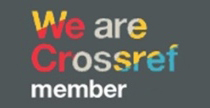THE PLANTING DAN PAYOFF YANG EFEKTIF DALAM NASKAH DAN PENYUTRADARAAN FILM AGAK LAEN; SEBUAH ANALISIS
DOI:
https://doi.org/10.51804/deskovi.v7i1.16526Keywords:
planting and payoff, cinematic analysis, cinematic narrative, foreshadowing, narrative deviceAbstract
Dalam ranah konstruksi penceritaan sinematik, penanaman dan pengungkapan, planting and payoff dan foreshadowing, berfungsi sebagai perangkat naratif yang sangat penting di mana petunjuk-petunjuk halus yang ditempatkan lebih awal dalam alur cerita berujung pada pengungkapan atau peristiwa penting, memperkaya keterlibatan dan pengalaman naratif penonton. "Agak Laen," sebuah film yang dengan mahir menggabungkan unsur-unsur komedi dengan tema-tema yang mendalam, memberikan kanvas yang sangat menarik untuk mengeksplorasi penerapan strategis dari penanaman dan pengungkapan. Penelitian ini secara cermat menguraikan lanskap naratif film, fokusnya pada hubungan simbiosis antara hiburan komedi dan gravitasi yang mendasarinya, yang difasilitasi oleh penyelarasan yang rumit dari teknik penanaman dan pengungkapan. Melalui analisis mendalam pada titik-titik penting dalam alur cerita, terutama kematian tidak disengaja di dalam rumah berhantu dan upaya untuk menutupinya, kami mengungkapkan lapisan-lapisan halus dari penanda awal yang tersemat dengan cermat dalam alur cerita. Sentral dalam penyelidikan kami adalah artefak simbolis yang ditinggalkan oleh almarhum, sebuah wadah obat dan topi kuning, masing-masing berfungsi sebagai katalis untuk serangkaian pengungkapan-pengungkapan penting, mulai dari keuntungan keuangan hingga pukulan emosional. Melalui pemeriksaan yang cermat, kami mengungkapkan dampak mendalam dari penanaman ini, yang tidak hanya meningkatkan kedalaman naratif film tetapi juga menegaskan kekayaan dan resonansi tematiknya. Penelitian ini menawarkan wawasan berharga tentang seni konstruksi naratif sinematik, menjelaskan bagaimana teknik-teknik penanaman dan pengungkapan meningkatkan pengalaman bercerita, terutama dalam film komedi dengan nuansa serius, seperti yang ditunjukkan oleh kisah berlapis dari "Agak Laen."
In the realm of cinematic storytelling construction, planting and payoff, or foreshadowing, serves as a pivotal narrative device where subtle hints and clues laid out earlier in the plot culminate in significant revelations or events, enriching the audience's engagement and narrative experience. "Agak Laen," a film masterfully blending comedic elements with profound themes, offers a compelling canvas for exploring the strategic deployment of planting and payoff. This study meticulously dissects the film's narrative landscape, focusing on the symbiotic relationship between comedic relief and underlying gravity, facilitated by the intricate weaving of planting and payoff techniques. Through an in-depth analysis of pivotal plot points, notably the accidental death within a haunted house and the ensuing cover-up, we uncover the nuanced layers of foreshadowing meticulously embedded within the storyline. Central to our investigation are the symbolic artifacts left behind by the deceased, a medicine container and a yellow hat, each serving as catalysts for a cascade of consequential payoffs, ranging from financial windfalls to emotional reckonings. Through meticulous scrutiny, we unveil the profound impact of these plantings, which not only enhance the narrative depth of the film but also underscore its thematic richness and resonance. This study offers valuable insights into the artistry of cinematic narrative construction, elucidating how planting and payoff techniques elevate the storytelling experience, particularly in comedy films with serious undertones, as exemplified by the layered tapestry of "Agak Laen."
Downloads
References
Abbott, H. P. (2020). The Cambridge introduction to narrative. Cambridge University Press.
Alderson, M. (2011). The plot whisperer: Secrets of story structure any writer can master. Adams Media.
Bal, M., & Van Boheemen, C. (2009). Narratology: Introduction to the theory of narrative. University of Toronto Press.
Berliner, T. (2019). Expect the Unexpected: Psycho and the Types of Planting and Payoff. Style, 53(1), 105–131. https://doi.org/10.5325/style.53.1.0105
Bordwell, D., & Thompson, K. (2003). Film Art: An Introduction (7th ed.). McGraw-Hill.
Bordwell, D. Narration in the Fiction Film. Madison: Univ. of Wisconsin Press, 1985.
Creswell, J. W., & Poth, C. N. (2016). Qualitative inquiry and research design: Choosing among five approaches. Sage publications.
Howard, D., & Mabley, E. (1993). The tools of screenwriting: A writer's guide to the craft and elements of a screenplay. Macmillan.
IMDb (2024). Agak Laen Full Cast and Crew.https://www.imdb.com/title/tt28856462/fullcredits?ref_=tt_cl_sm
McKee, R. (1997). Story: substance, structure, style and the principles of screenwriting. New York, ReganBooks.
Narasi TV (2024). Sinopsis Agak Laen, Film yang Raih 1 Juta Penonton dalam Empat Hari https://narasi.tv/read/narasi-daily/sinopsis-agak-laen
Neale, S., & Krutnik, F. (1990). Popular Film and Television Comedy. Routledge.
Nibley, A. "Good Story Well Told, Volume I: Principles of Film Analysis." (2013). Dreamlake Media, p. 83.
Propp, V. (1968). Morphology of the Folktale. University of Texas press.
Rayfield, Donald. Anton Chekhov: A Life. New York: Henry Holt and Co., 1997.
Thompson, K. (2003). Storytelling in film and television. Harvard University Press.
Downloads
Published
How to Cite
Issue
Section
License
Copyright (c) 2024 DESKOVI : Art and Design Journal

This work is licensed under a Creative Commons Attribution 4.0 International License.
With the receipt of the article by DADJ Editorial Board and the decision to be published, the copyright regarding the article will be transferred to DADJ. The copyright transfer form can be downloaded here.
DADJ has the right to multiply and distribute the article and every author is not allowed to publish the same article that was published in this journal.

DESKOVI: Art and Design Journal is licensed under a Creative Commons Attribution 4.0 International License.
Under the following terms:
Attribution — You must give appropriate credit, provide a link to the license, and indicate if changes were made. You may do so in any reasonable manner, but not in any way that suggests the licensor endorses you or your use.






